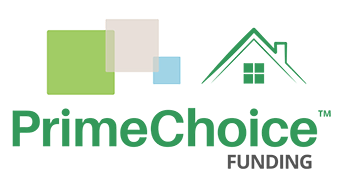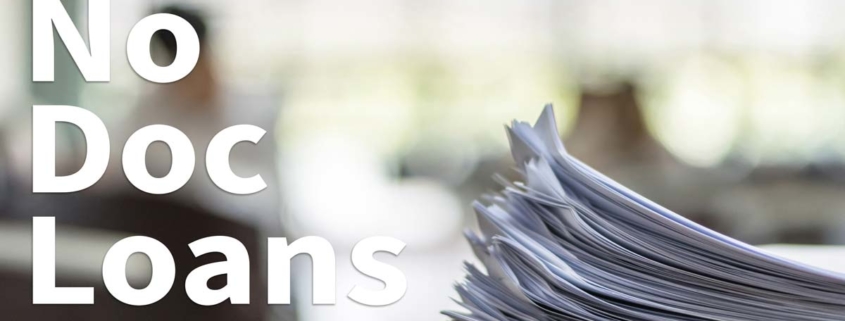Tag Archive for: non qm
Real estate investing is both exciting and monotonous; lucrative and costly; challenging and conquerable. Whether investors choose wholesaling, land-lording or real estate investment trusts — or a combination of the three — few do it simply for the fun of it. Most often, they seek a profitable living from this activity. Yet the nature of this work means the income from it flows from multiple sources at an intermittent tempo. Borrowing money for projects gets hairy since regular pay stubs and simple 1040s are not available or do not reflect the investor’s capability to pay the extended credit back promptly.
No Doc Loans when Revenue Ebbs and Flows
Due to the fluctuating nature of investors’ incoming receipts, obtaining a mortgage for a property presents more obstacles than for a salaried employee, say. In recognition of this challenge, some banks and finance businesses established the no doc loan. Having come under fire for the credit crisis in the 21st century’s first decade, this loan product was pulled by many institutions. Still, as the critical mass from that event fades into history, the no doc loan is enjoying a huge comeback.
No doc is really shorthand for no income documentation necessary. This means that a loan applicant’s declared income is accepted by the underwriters with no authenticating records to prove it. Doing so adds risk for the lender so mortgage loans of this sort generally come with a higher price tag in the form of interest rate, settlement fees and, sometimes, a larger down payment. At the same time, investors are relieved the enormous burden of proving cash streams that ebb as often as they flow. Why would a bank trust the word of an investor? They rely on other sources to validate an applicant’s trustworthiness: credit report, evidence of business longevity, bank statements and other asset demonstrations. Plus, the value of the subject property — vital if foreclosure is ever warranted — is also a significant offsetting factor.
How No Doc Mortgages Help Investors
Real estate investing is a highly competitive enterprise where time is as valuable as money. Streamlining the loan approval process only helps investors who need to make deals before someone gets the jump on them. Since wholesalers do not hold onto property for too long — hopefully — the lack of prepayment penalties on no doc mortgages is to their great benefit. With decent cash reserves and good credit, real estate investors can qualify, close and move on to the next project. Since remedial measures are now codified into law, the old scenario when owner-occupants were getting no doc credit is forbidden, leaving the field wide open for entrepreneurs.
The prospect of higher rates, more fees and a larger amount of upfront money may daunt an inexperienced investor. After all, higher rates increase the debt service — thereby diminishing cash flow — while a bigger deposit shrinks the cash-on-cash return. More seasoned real estate professionals recognize the pros of a no doc loan while mitigating the cons by negotiating a lower purchase price or raising rents, for example.
When in Doubt, Get More Info
Whether a veteran investor or a newbie, a house buyer can enjoy expedited and less complicated approval proceedings by opting for the no doc mortgage. Yet the numbers should crunch so that the property turns out to be a worthwhile asset. Loan officers well-versed in no doc products — and worthwhile alternatives — are the best resources to employ in order to discover how a no doc loan can help or harm the bottom line of any buyer.
Adam Luehrs is a writer during the day and a voracious reader at night. He focuses mostly on finance writing and has a passion for real estate, credit card deals, and investing.
In an era when interest rates are attractive and processing is streamlined, getting a mortgage is as quick and painless — so to speak — as it ever was. With the prevalence of automated underwriting systems and relaxed, pre-banking crisis guidelines, loan applicants find that their approvals are accelerated and the terms are favorable. One ongoing headache, however, is the requirement for verifying documentation. Gathering pay stubs, bank statements, tax returns, insurance declarations and other forms is time-consuming and, worse, sometimes impossible for owners of all-cash businesses. Fortunately, self-employed entrepreneurs have essential recourse in the availability of no doc loans.
How Do No Doc Loans Work?
No documentation mortgage loans actually do require certain records. The verification to which the name “no doc” refers relate to income. Small business owners receive their revenue from a myriad sources. Not all of the income is declared on federal tax forms. Therefore, these usual staples of loan applications do not represent a prospective borrower’s capacity to repay the loan. The no doc mortgage application accordingly waives corroborating evidence of stated earnings. Instead, lenders accept the borrower’s assertion of annual compensation. Of course, this trust is not free; it comes at a price.
A bank or finance company will receive this sort of income declaration because its confidence is placed primarily in the value of the collateral, not the earnings of the borrower. The idea is that a property with a high enough resale price will compensate for monies lost in the event of default and subsequent foreclosure. Still, this is not the only way to offset the risk of no income verification. Banks offering no doc loans will also want to see an excellent credit profile and evidence of a solvent business. Doing so will prevent the devastating mistakes of years past.
Are No Docs Considered Alt-A Loans?
Loans where the risk factor hovers between prime and sub-prime (high risk) are categorized as Alt-A loans. These loans grew in popularity in the years leading up to the banking crisis of 2007 through 2009. They are also implicated as fomenting that crisis. In addition to no doc, Alt-A products included:
- Low Doc Loans — where good credit scores precluded the need for much supporting information
- No Income/No Asset — docs are waived as long as employment is confirmed
- Stated Income/Stated Asset — little to no verification asked for
- NINJA, i.e. No Income, No Job, No Assets — credit extended freely without any evidences
These loans had high default rates in the early 2000s yet were sold in large pools to investors. In the case of no doc loans, the high credit standards and other conditions that offset the risk were inconsistently enforced. The Dodd-Frank regulations were a response by the U.S. Congress to correct that laxity. The no doc products offered today impose stricter standards in order to serve the borrowers for whom income verification is a challenge. Nevertheless, lenders assume a greater hazard when they do without standard documentation. As a consequence, they charge higher rates on no doc loans.
Is No Doc Right for You?
Rates notwithstanding, no doc mortgage loans are a practical way for the self-employed and others with fluctuating incomes to finance a home purchase. A good way to determine the feasibility of a no doc application — or to consider alternatives — is to consult a loan officer with a well-established and well-regarded mortgage lender. A seasoned professional can help to navigate around the questions regarding no doc products.
No doc mortgage loans are of particular interest to real estate investors. Lenders want to see how such a property will perform. Underwriters review the Debt Service Coverage Ratio to see if projected monthly income from the property matches or surpasses the monthly loan payment. A matching ratio is 100 percent; anything higher is better. Appraiser surveys of similar local houses or current active leases confirm the projections. Variations of no docs include bank statement loans that work from two years of deposit activity. If you are self employed and want to obtain a bank statement loan, we can help and only ask that you provide 12-24 months of business and personal statements. If assets are abundant enough, they can prove the capacity to repay the loan by themselves.
Adam Luehrs is a writer during the day and a voracious reader at night. He focuses mostly on finance writing and has a passion for real estate, credit card deals, and investing.
In January of 2019, Forbes magazine announced that “The explosion of the gig economy continues unabated.” Noting that 55 million Americans engage in either freelance or contract work, the article predicted a further increase in 2020. While entrepreneurship and hustle are trademarks of the successfully self-employed, so too are hours of paperwork and a good deal of rejection. No matter. Independent business people know that the cost of their financial freedom is high. Still, few of them would mind a break now and then. Financial institutions are recognizing their value by issuing bank statement loans to self-employed customers.
How Does a Bank Statement Loan Work?
Under an orthodox loan scenario — whether a mortgage, auto or personal loan — the bank will collect W-2 forms, copies of pay stubs and a verification of employment as proof that stated revenue is accurate. Yet self-employed applicants can not present these tried and true authentication records. They get paid when a job is done as opposed to fixed weekly or bi-weekly intervals. The amount of remuneration will depend on the size and scope of each individual contract or task. Needless to say, this type of income does not fit easily into standard underwriting calculations and makes getting a bank statement mortgage loan much harder.
Small business owners and sole proprietors can, on the other hand, produce commercial and personal bank statements that demonstrate income over a period of 24 months. In addition to the statements, many lenders require that the business be operating for at least two years; adequate financial resources to cover a number of monthly payments; acceptable credit scores; documented assets in retirement funds and other savings instruments; an accountant or tax professional’s certification of income and expenses; and any necessary licenses or professional credentials. Each of these adds an extra measure of confidence in the borrower’s ability to repay the loan.
Of course, each lender will differ regarding the items necessary for approval. What unites them is the absence of the normal income verification proofs because most applicants take in revenue in an irregular fashion. In some ways, the bank statement loan resembles the stated income loan popular in years past. The difference is that the bank statement is the verifying document in the former whereas the latter demands no verification of income. Both types are made available with the self-employed in mind but the bank statement loan may be seen as safer by investors after the banking crisis of 2007-2009.
What About Conventional Loans?
Entrepreneurs can and do get conventional loans. In some cases, doing so is advisable since bank statement mortgage loans will sometimes carry higher interest rates. On the other hand, given that income sources can be varied and shifting, underwriters are challenged by applications from the self-employed. Whereas many applications are run through desktop underwriting software, those from freelancers and gig entrepreneurs must be underwritten manually, as credit analysts must give greater weight to tax returns. This extends the approval process beyond the time a borrower might want to wait.
Are There Drawbacks to Bank Statement Mortgages?
As noted above, rates may be higher for a bank statement mortgage Furthermore, there is often a greater down payment requirement, as much as 30 percent. It follows then that the borrower can only get 70 percent of the house value at a maximum. Finally, closing costs can be higher than with a traditional mortgage loan. When the lending institution deals with a sole proprietor or small holder, and its confidence level in the business — fairly or unfairly — is less than total, the risk factor makes the loan more expensive.
A Good Option If Affordable
Acknowledging the expense associated with bank statement loans, they are still a legitimate option that keeps the paperwork to a minimum and heightens the chances for approval. Talk with a seasoned loan officer about this opportunity to see if it is right for you.
Adam Luehrs is a writer during the day and a voracious reader at night. He focuses mostly on finance writing and has a passion for real estate, credit card deals, and investing.
Prime Choice Funding, Inc.
1100 Town and Country Rd,
Suite 1250, Office 1206
Orange, CA 92868
NMLS ID: 117375
DRE License # 01806911
NMLS Consumer Access
Texas State Compliance
This website provides information only and does not guarantee credit or loan approval. Dates and information are subject to change without notice. All loan products are subject to credit approval.
Prime Choice Funding, Inc. is not affiliated with or acting on behalf of or at the direction of FHA, VA or the Federal Government.






